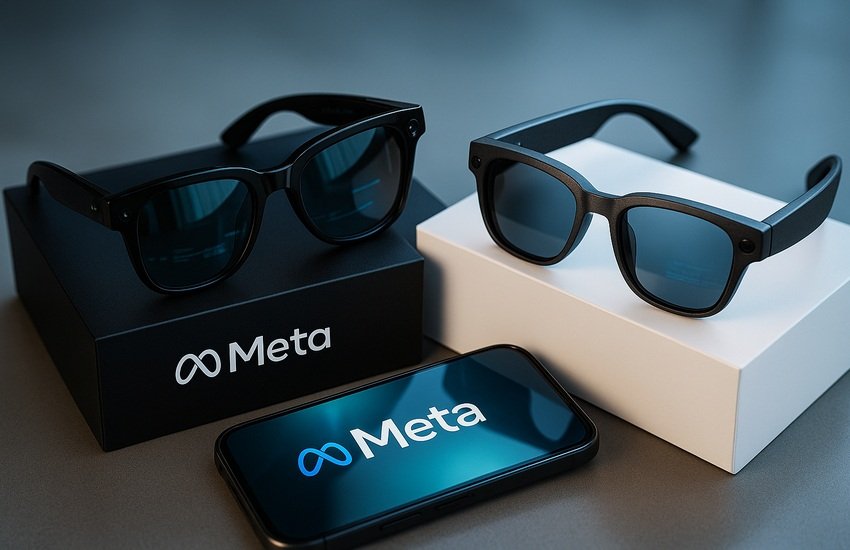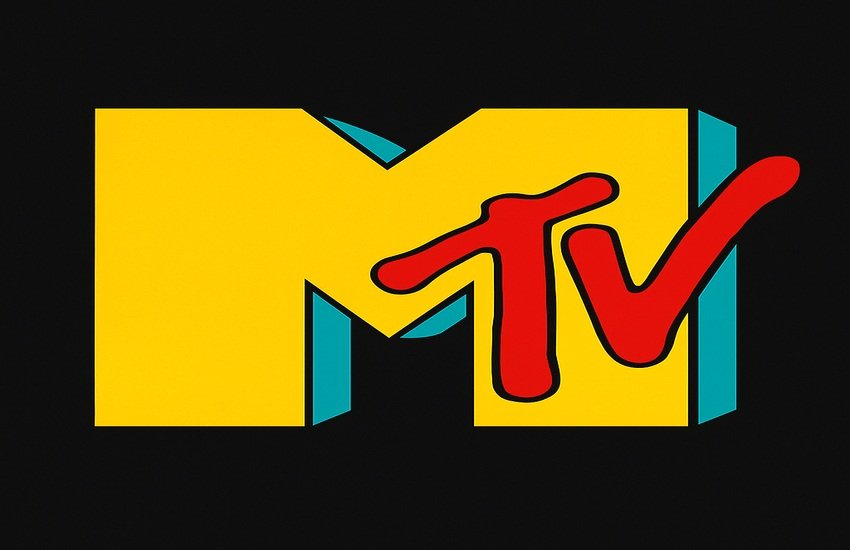Continue Reading With Our 7-Day Free Trial
Meta Platforms has taken another bold step in its augmented reality (AR) journey with the announcement of its $800 Ray-Ban smart glasses featuring a built-in display, gesture-based control via a Neural Band wristband, and AI integration. Unveiled at its September 2025 Connect conference, these glasses aim to transition the market from novelty wearables to daily-use smart devices. With over 2 million units of the prior Ray-Ban model sold since 2023, Meta is pushing hard to capitalize on its dominant 60% market share in smart glasses. Investors are cautiously optimistic: while Meta’s stock is down from August highs, it gained 0.4% to $767.86 ahead of the launch. The implications are significant—not just for Meta’s Reality Labs division, but for the entire AR category. However, the division is on track to post up to $20 billion in losses in 2025, raising questions about sustainability. This launch may define Meta’s position in AR for years to come.
Smart Glasses Go Mainstream?
Meta’s latest Ray-Ban smart glasses could mark the inflection point in consumer AR adoption. While smart glasses have historically been niche, with global sales exceeding 2 million units for the first time in 2024, Meta is attempting to shift the category toward the mainstream by layering in real utility. The new device features a digital display embedded in the lens, capable of showing navigation cues, live translations, and notifications. Unlike previous models, which were primarily audio-visual capture tools, this iteration functions as a lightweight, everyday heads-up display. The integration of a Neural Band wristband for gesture control further reduces friction, enabling users to interact with the interface silently and intuitively. These features align with the growing consumer appetite for ambient computing—digital experiences that exist in the periphery rather than on a phone screen. Still, a $799 price point poses a serious barrier to mass adoption. Meta is betting that early adopters and tech enthusiasts will generate enough buzz and demand to create network effects, allowing for scale production and cost reductions over time. This strategy is familiar; Apple used similar tactics with the first iPhone and Watch. The big question is whether mainstream consumers will find enough value in lightweight AR to justify the price. The opportunity is vast—estimated at over $100 billion in addressable market by 2030—but execution risk remains high. With Apple Vision Pro priced far higher and Google still in development mode, Meta’s glasses could enjoy a temporary lead. However, in the absence of mass-market apps or productivity use cases, broad consumer utility remains to be proven.
The $800 Leap Into The Future
At $799, the Ray-Ban Meta Display glasses represent a substantial leap in ambition—and pricing—within Meta’s wearable portfolio. This pricing tier positions the product well above prior models, signaling a pivot toward premium hardware in AR. The glasses offer a 600×600 resolution microdisplay in the right lens, visible even in sunlight thanks to a 5,000-nit brightness panel. The inclusion of a 12MP camera with 3× zoom, combined with on-board audio and gesture controls via the Neural Band, creates a comprehensive user interface untethered from smartphones. Battery life clocks in at around 6 hours of active use for the glasses, and 18 hours for the Neural Band—adequate for intermittent daily usage but not quite ready for all-day replacement of mobile devices. Manufacturing is being handled in partnership with EssilorLuxottica, and while Meta hasn’t revealed exact unit economics, the advanced feature set and novel display tech likely push COGS to elevated levels. This creates pressure on gross margins unless production scales rapidly. The decision to price aggressively—just under $800—appears calculated to convey value while maintaining the perception of a high-end lifestyle product. It also sidesteps direct price comparisons with more expensive mixed-reality headsets like Apple’s Vision Pro. For developers and enterprise use cases, this price point may be tolerable, but consumers may view it as too expensive unless the glasses demonstrate clear daily utility. Ultimately, this launch will test whether AR can shift from niche gadgetry to mass-market accessory, or whether smart glasses remain a futurist luxury item.
Meta Owns The AR Game
Meta’s AR playbook now appears to be the most advanced and commercially mature in the tech landscape. By selling over 2 million smart glasses since 2023 and commanding more than 60% of the global smart glasses market in 2024, Meta has built distribution and brand equity in a product category where others are still prototyping. The latest launch extends this advantage by embedding new capabilities into familiar Ray-Ban frames—ensuring brand continuity while upgrading functionality. Meta’s investments in AI integration, particularly the use of wrist-based gesture recognition via the Neural Band, add to its ecosystem stickiness. Its product strategy reflects a broader intent to dominate “ambient computing”—where digital interfaces are accessed passively and contextually, without requiring dedicated screens. Moreover, Meta benefits from full-stack control: hardware, operating system, app layer, and distribution through its own channels. Competitors like Google are still aligning partners, and Apple remains focused on mixed reality, not everyday AR wearables. Meta’s early bet on AR—despite the immense capital burn—has built moats in product maturity, supply chain efficiency, and user feedback loops. Additionally, by packaging AR within a lifestyle accessory rather than a tech gadget, Meta is building around fashion as much as function. This combination could make it harder for traditional tech peers to displace Meta in AR glasses. However, the category remains young and highly fluid. Meta’s dominance is meaningful today, but without entrenched app ecosystems or third-party hardware licensing (as in smartphones), leadership is not guaranteed. Still, among tech giants, Meta is best positioned to define how everyday AR devices evolve.
Big Bets, Big Losses
Despite the excitement around its latest product, Meta’s AR ambitions are straining its financials. Reality Labs, the division overseeing smart glasses, headsets, and the metaverse, is expected to lose up to $20 billion in 2025 alone—up from $17.7 billion in 2024. In Q2 2025, Reality Labs reported a $4.5 billion operating loss on just $370 million in revenue. These losses have become a persistent drag on Meta’s earnings and are drawing increased scrutiny from analysts. While Meta’s overall business remains profitable—driven by robust advertising and AI monetization—Reality Labs is diluting operating leverage and limiting margin expansion. These investments have not yet yielded any recurring revenue streams or app ecosystems akin to iOS or Android. Moreover, Meta’s LTM valuation multiples reflect the burden: LTM EV/Revenue stands at 10.91x and LTM EV/EBITDA at 20.70x as of September 17, 2025. Its LTM P/E is 28.14x and market cap to free cash flow ratio has risen to 61.14x. These levels imply that much of the stock’s premium is still predicated on long-term optionality—especially in AI and AR—which may be vulnerable to execution missteps. Meta’s levered free cash flow yield has compressed to just 1.6%, down sharply from earlier quarters, showing capital efficiency pressure. If Reality Labs fails to deliver commercial success in smart glasses or scales too slowly, Meta could be forced to pivot or downsize the division, impacting its strategic narrative. For now, investors are tolerating the burn due to continued strength in advertising, but as capital costs rise and margin scrutiny increases, Reality Labs must begin to show signs of monetization.
Key Takeaways
Meta’s $800 Ray-Ban smart glasses launch marks a pivotal moment in its AR strategy—combining mainstream branding with next-generation display and gesture technology. The product demonstrates a leap in functionality and reflects Meta’s position as the current leader in the consumer AR category. However, the initiative carries substantial risks: pricing remains high for mass adoption, the value proposition is still nascent, and Reality Labs continues to post outsized losses that weigh on overall financial performance. With LTM valuation multiples such as 10.91x EV/Revenue and 28.14x P/E, Meta is trading at a premium that demands future success in emerging technologies like AR and AI. While the launch expands Meta’s technological lead and strengthens its ecosystem, the sustainability of this strategy will depend on achieving scale, reducing losses, and proving recurring revenue potential. As of now, the glasses represent a significant but unproven bet on the future of computing—and Meta’s role in it.





